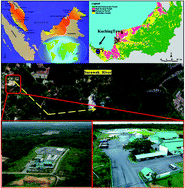Prediction analysis of effluent removal in a septic sludge treatment plant: a biomimetics engineering approach
Abstract
Effluent discharge from septic tanks is affecting the environment in developing countries. The most challenging issue facing these countries is the cost of inadequate sanitation, which includes significant economic, social, and environmental burdens. Although most sanitation facilities are evaluated based on their immediate costs and benefits, their long-term performance should also be investigated. In this study, effluent quality—namely, the biological oxygen demand (BOD), chemical oxygen demand (COD), and total suspended solid (TSS)—was assessed using a biomimetics engineering approach. A novel immune network algorithm (INA) approach was applied to a septic sludge treatment plant (SSTP) for effluent-removal predictive modelling. The Matang SSTP in the city of Kuching, Sarawak, on the island of Borneo, was selected as a case study. Monthly effluent discharges from 2007 to 2011 were used for training, validating, and testing purposes using MATLAB 7.10. The results showed that the BOD effluent-discharge prediction was less than 50% of the specified standard after the 97th month of operation. The COD and TSS effluent removals were simulated at the 85th and the 121st months, respectively. The study proved that the proposed INA-based SSTP model could be used to achieve an effective SSTP assessment and management technique.


 Please wait while we load your content...
Please wait while we load your content...